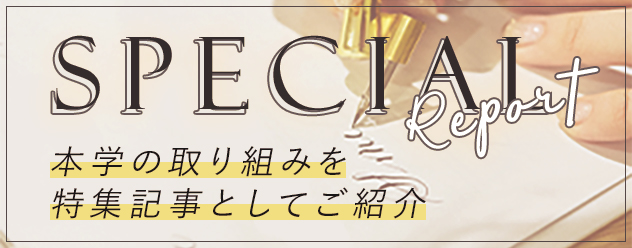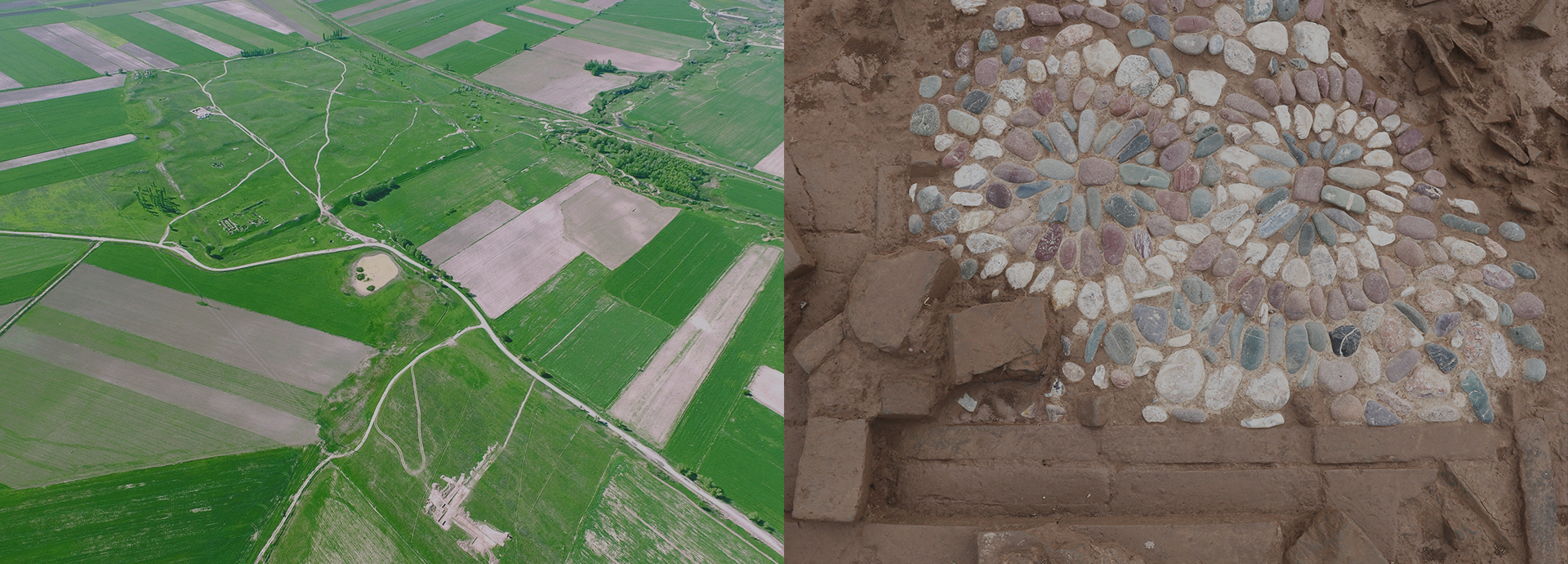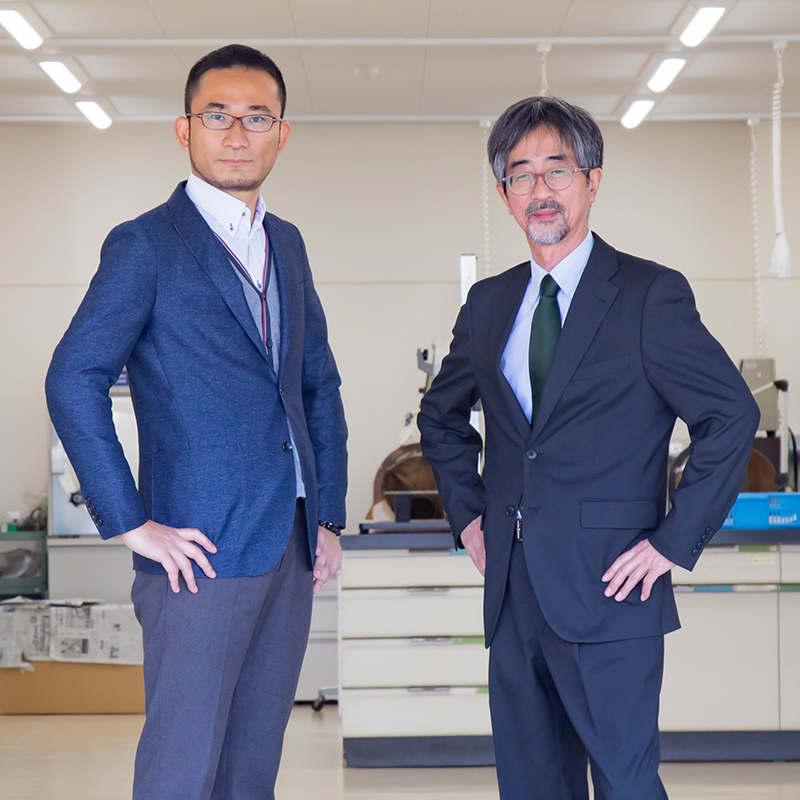Established for the purpose of academic research on the "Silk Road," a transportation route that runs through the Eurasian continent from east to west.
"Teikyo University Silk Road Academic Research Team". With Professor Kazuya Yamauchi, who specializes in archeology, at the top
Experts from various fields gather to conduct interdisciplinary surveys.
Through the excavation of the base city "Ak Besim Ruins" where eastern and western cultures intersect
I am trying to unravel the lives and culture of the people at that time.
The tiles that prove the existence of the city of China
Discover colorful stone paved remains
In May 2017, a large amount of roof tiles believed to date back to the second half of the 7th century were discovered at the Ak-Beshim ruins in the northern part of the Kyrgyz Republic. The excavation was carried out by the Teikyo University Silk Road Academic Research Team, which was established in 2016 and is led by faculty members from Research Institute of Cultural Properties, Teikyo University.
Ak-Beshim Ruins in Northern Kyrgyzstan

The study team conducted a total of eight field surveys from 2016 to 2019, and in the first survey in 2017, they found a large amount of roof tiles buried over a width of about 2 m and a length of about 25 m. Due to the presence of these tiles with Chinese characters on them, it is certain that this place is the site of the military base "Saiyochin Castle" built on the Silk Road by the Chinese dynasty Tang at that time. Became.


The following year, in the first survey in 2018, another tile deposit was found near it. As we dug further into these tile pieces, a vivid stone paved remains with a flower pattern drawn by combining stones such as red, white, and green appeared from under the tiles, which surprised the entire research team. Professor Kazuya Yamauchi, the leader of the research team, says he still remembers the excitement at the time of the discovery.
"Surprising discoveries are rare. It is a valuable discovery just because the tiles with Chinese characters are written, but I was overwhelmed by the amount of tiles that came out one after another. It remains. The next year's excavation found a colorful stone paving. Such a stone paving is very rare in Central Asia, so it became a big topic in the local area. "(Professor Yamauchi)
In a city bordering eastern and western culture
I want to know about culture and people's exchanges
The archaeological site of Ak Besim, which is the subject of the survey, is said to be the place where the Tang dynasty poet Li Bai was born in the land that was once called "Suyab". The feature is that the city built by the Sogdo people (1st Shafristan), which is expanding from the west to the east, and the crushed leaf castle (2nd Shafristan), which was built by Tang aiming to expand from the east to the west, are adjacent to each other. It is a valuable archaeological site where you can investigate the contact and exchanges of how the people of the east and west lived in a place that was also a point of contact and a boundary between eastern and western culture.

In addition to the eastern and western peoples, Ak Besim was also home to nomads. In addition, Buddhism, Christianity, and Zoroastrianism also exist, and traces of people who worship each of them lived together have been found. Conflicts arise when different ethnic groups live on the same land, but they were able to coexist because of the different ways of land use. Conflict is easier to talk about in history, but I'm interested in why we could coexist without conflict. "(Professor Yamauchi)
The survey of the Ak Besim site also excavated the roads that existed in the city. The excavation of the road is not a big discovery, but the research team thought it was meaningful to clarify the road.
"Because the people at that time were throwing all the garbage on the road, garbage was piled up on the street. People at that time also had a garbage problem. Buildings lined up on both sides of the street, centered on the street. You can see that there was a life of people in the city, and the streets make it possible to imagine the whole city. People walking on this street, where eastern and western peoples and nomads come and go, spoke in different languages. If you look at this street with that in mind, you will be deeply moved. "(Professor Yamauchi)
In multidisciplinary interdisciplinary research
Revealed life 1300 years ago
The members of the study team are a wide range of experts in archeology, plant archeology, zooarchaeology, conservation and restoration of cultural properties, and scientific analysis. I'm trying to unravel people's lives.

From the seeds of the plants found in the excavations so far, the actual conditions of vegetation and food culture at that time can be seen. Visiting Professor Seiji Nakayama, who specializes in plant archeology, focused on grains that were transmitted from west to east or from east to west through the Silk Road. We will investigate how barley, wheat, and legumes originating in West Asia, as well as millet and millet originating in northeastern China, were brought in from various regions.

Associate Professor, who specializes in zooarchaeology, is trying to capture the state of carnivorous eating from the bones of livestock such as cows and sheep. For example, from the age at which a cow was dismantled, the difference in usage such as for meat or milk can be understood, and the dietary habits peculiar to the area can be seen. In addition, the real pleasure of interdisciplinary research is to expand into various fields with one field as a trigger, such as understanding how Islam is transmitted from the state of pork food.
Among the many cultural properties excavated, mainly metal products are brought back to Japan for preservation and restoration. This is because metals that are not well preserved will rust and deteriorate. We are investigating the internal structure and materials using various analyzers. Associate Professor Fujisawa, who is in charge of conservation and restoration of such cultural properties and scientific analysis, says that the mission is to preserve the cultural properties in good condition and pass them on to future generations.


"From here, Chinese money etc. comes out, which is one of the evidences that this was a city of Tang. Metal products are not so much, but when you look at the metal processing technology, it is east and west. You can see that the technology is transmitted. Moreover, it is interesting to see that there are differences in processing technology depending on the race, and that they are making their own according to their lifestyles and uses. "(Associate Professor Fujisawa)


Ruins where valuable materials sleep
I will spend my life excavating and investigating
In 2020, we plan to dig up the place where the Christian church was, and if we can find traces of the beliefs and lives of Christians at that time, such as the cross, we can see another culture.
"I'm thinking,'What is the transmission of culture and things?'. Even if they have the same shape, the materials and methods of making them may be different, but what was conveyed in such cases? I would like to know if it worked, if things moved, if the design moved, along with the process of transmission, and how they were useful and accepted for the exchange of different ethnic groups. "(Associate Professor Fujisawa)
"Since this survey has revealed the state of the city of China, we will clarify the lives of the people who lived there in future surveys. Knowing this place is a trade route where people and culture come and go. It will lead you to know the entire Silk Road. I think the Ak Besim site is a place worth digging for your entire life. "(Professor Yamauchi)
The archaeological excavation of the Ak Besim site has just begun. The range will be further expanded over the next few years, but the more you dig deeper into this land, which has prospered for as long as 500 years, the more you can see the lifestyle of the old age. Professor Yamauchi et al. By expanding the scope of research in the horizontal (spatial) and vertical (time) directions, how people and cultures from different lands take root in that land, and different cultures and ethnic groups We will clarify whether coexistence has been achieved.





